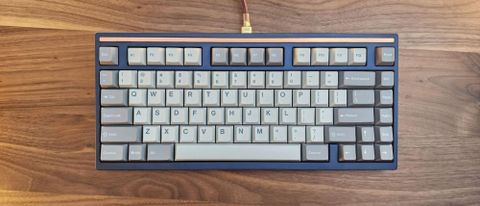Tom's Hardware Verdict
The Mode Sonnet is a fantastic option for keyboard enthusiasts and newcomers alike. With its exceptional online configurator, outstanding build quality, and first-rate typing experience, it’s genuinely one of the best custom keyboards you can buy outside of the group buy model.
Pros
- +
Outstanding build quality
- +
Exceptionally rich customization options
- +
Excellent sound and feel
- +
Refined, minimalist aesthetic that’s still rich with style
Cons
- -
Becomes expensive very quickly
- -
No gasket mount option
Why you can trust Tom's Hardware
The custom mechanical keyboard hobby has expanded tremendously over the last few years, but one staple has remained the same: the best keyboards are almost always locked behind the group buy model, forcing you to pay sometimes upwards of a year in advance. Mode Designs has bucked that trend with its online configurator, replacing those extended wait times with a (mostly) ready-to-ship operation, more customization options, and a level of quality that competes with the very best custom keyboards.
The Sonnet may just be Mode’s most beloved keyboard. First launching in mid-2022, it has made the rounds on r/mechanicalkeyboards and has had its praises sung far and wide by prominent keyboard influencers. After trying it for myself, it’s no wonder why. Not only does it look great fully built on a desk, the level of refinement in everything from its construction to its typing experience is nothing short of class-leading for a (mostly) readily available custom keyboard.
Prices start at $299 and escalating quickly. Our review unit is close to the most expensive configuration and comes in at $661, assuming you provide your own switches, keycaps and stabilizers. If you buy these with the keyboard, Mode provides a $35 discount, but the total cost comes to $781. You certainly don’t need to invest in all of the most expensive options, however, and the average Sonnet should come in around $400 to $450. The Sonnet isn’t cheap, but it still manages to feel like a good value in most configurations — especially if you’re itching to elevate your typing experience and desk aesthetic in a way that feels safe and lacks the dramatic wait times. Just be prepared to pay for its customization options.
Mode Sonnet Specs
| Switches | Not included (optional add-on) |
| Lighting | None |
| Onboard Storage | 4 layers of programmability |
| Media Keys | Programmable |
| Connectivity | USB Type-A |
| Cable | 6 feet, braided |
| Materials | Aluminum or polycarbonate top; aluminum, brass, copper, stainless steel, polycarbonate bottom; aluminum, brass, copper, stainless steel, or walnut accent |
| Switch Plate | FR4, carbon fiber, polycarbonate, brass copper, or aluminum full plates; FR4, polycarbonate, or aluminum half plates |
| Keycaps | Not included (optional add-on) |
| Software | QMK/VIA |
| Dimensions (LxWxH) | 143mm x 315mm x 19mm (5.62 x 12.4 x 0.75 inches) |
| Weight | 3 - 7.5 pounds fully assembled |
Design of the Mode Sonnet
The Mode Sonnet is all about aesthetics. It’s the first thing you’ll appreciate when you take a tour of its online configurator. The keyboard uses a compact 75-percent layout, which means it has arrow keys, a function row, and a single navigation and editing column but lacks a numpad. But from there, the design details take over.
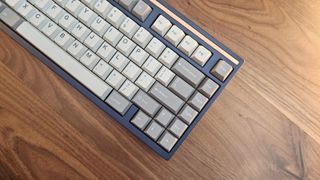
The keyboard uses a three-part design for its case, each of which can be mixed and maxed to taste. You have the aluminum top case, which is available in nine different colors (black, lavender, green, silver, gray, white, navy, crema, and ice blue). An accent bar runs along the top edge and is available in 11 colors, including different materials like brass, copper, and even walnut. The bottom comes in eight colors and five materials: aluminum (black, gray, gold, and white), brass, copper, and polycarbonate.
Using the configurator, you can mix and match colors and materials to design your perfect fit and see how it looks in real-time. Our review sample was sent with a navy top with a copper accent and bottom. The results look even better in person. The accent bar seems like a small detail on paper but, sitting in front of you, really makes the design pop. There’s also some really nice contouring along the sides, where the bottom color is visible when viewed at an angle, which looks nice and makes the keyboard easier to pick up and reposition.
These choices impact more than just the keyboard’s aesthetics. Your choice of material will directly impact its sound. Denser materials, like brass or copper, will lead to higher-pitched keystrokes, while softer materials like polycarbonate will sound deeper.

This is also true for the other configuration options. During the design process, you’re presented with options for your switch mounting plate (FR4, carbon fiber, aluminum, brass, polycarbonate, POM, or copper), and can even choose to use a “half-plate” to increase flex. This option leaves a large cut-out around the alpha keys for the most flex, though is highly recommended for a soldered build so the switches don’t wobble in their sockets — a soldered and hot-swap PCB is another option at check-out.
You’ll also choose your internal weight and whether you’d like to have a silicone base for a second build option. The weight has less of an impact on sound and is more about giving the keyboard heft and solidity. Changing materials from the bottom case can also help mitigate any ringing noises or reverberations when typing.
The base, on the other hand, is directly tied to the keyboard’s mounting options. The Sonnet can be built in two ways: stack mount or isolated top mount. Stack mount involves adding a silicone insert into the bottom of the case, which the PCB and switches “stack” on top of. Isolated top mount leaves out the base and instead screws the PCB into the top case with silicone tabs to isolate your keystrokes and enhance its acoustics. There is no right or wrong, and I would encourage anyone considering the Sonnet to buy the base so they have the option. Stack mount has a more muted sound profile and less flex, while isolated top mount is more pronounced and is slightly softer under the fingers.
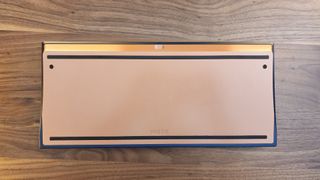
Mode also offers the option of purchasing everything you’ll need all at once — another nice feature for builders that don’t want to cobble together their keeb from multiple sites. You can choose to add switches, keycaps, stabilizers, and even lubricant, though the latter is available elsewhere on the site. The keycaps are also used in the renders on the configurator, so you can achieve that exact look you're going for.
Prices for the Sonnet begin at $299 but they go up quickly. Choosing any color other than black for the top and bottom case adds $10 to $50. Any other internal weight is $50. Alternate plates run anywhere from $5 to $45. A hot-swap PCB instead of solder is $10. That silicone base? $15, and if you want a foam kit to tune its acoustics (something usually built into the price of custom keyboards), that’ll be another $12. The most expensive configuration tops out at $736. Add switches, keycaps, and stabilizers to that and you’re upwards of $850. It’s quite a range.
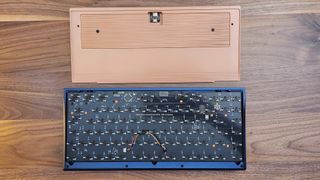
This isn’t to say that the Sonnet is exorbitant. It can be, but it doesn’t have to be. Much like the keyboard itself, Mode provides an array of options to cater to a wide swath of customers. If you’re a dedicated keyboard enthusiast who wants fancy, Mode has options for that. If you’re new to the hobby and want something safe (Mode isn’t a fly-by-night company) and that you know will be good, the starter $299 configuration is a great foundation to build on.
When I unboxed our sample, I was struck by how good it looked. Mode sent ours fully built with its own Obscura Linear switches and Anthracite keycaps. There’s a seductiveness to its minimalism, something that draws you in for a closer examination. It doesn’t have per-key RGB and it doesn’t need it. It’s refined and elegant in a way I haven’t seen on any other keyboard. It’s also clearly a “Mode” keyboard. The design language is unique enough that, if you know keyboards, you can look at it and tell: that’s a Mode.
Typing Experience of the Mode Sonnet
A post shared by Mode Designs (@modekeyboards)
A photo posted by on
Like all custom keyboards, the exact typing experience will depend on how you choose to build it. My sample was sent with Mode Obscura linear switches and Anthracite keycaps. The switches are long-pole, pre-lubed linears, with no tactile bump or click throughout the key press. The keycaps are made from a blend of PBT and ABS plastic for enhanced durability and use doubleshot legends for crispness and longevity.
Simply put, I was blown away by the quality of the typing experience. My last experience with a Mode keyboard was the Sixty-Five back in 2021 and the company has made leaps since that time. While the Sixty-Five was very good, the Sonnet is noticeably better with Mode’s Obscura switches. Keystrokes are smooth with just enough give to feel soft and non-fatiguing while still offering a crisp and pronounced sound profile.

There’s a classic long-pole sound from these switches. Long pole switches have a longer center stem than traditional switches like Cherry’s MX line. Rather than having the rails on either side of the switch bottom out, the Obscura’s center pole hits first, giving each press a more crisp, poppy sound profile, even without PE foam.
Trying both isolated top mount and stack mount, it's clear to me that each style will have its fans. The firmer, more muted sound profile of the stack mount may be a better fit for the office, but the isolated top mount felt and sounded better to me overall. Neither option is especially flexy under the fingertips, so it comes down to whether you prefer iso-top’s more open sound profile.
One of the things I have to give Mode credit for is designing a case that can sound good in multiple configurations. Many keyboards, especially those bought outside of the group buy model, rely on foam to sound good. Designing a case structure that doesn’t have hollowness or reverberation and can bring out the best in switches is a much more intricate process than it first seems. But that’s what Mode has done here. I tested it with multiple switches and configurations, and there wasn’t a single one that didn’t sound good. That means that no matter how you choose to build it, you can be confident that you’ll have an end product you can be proud of.
Gaming Experience of the Mode Sonnet
The Sonnet isn’t designed to be a gaming keyboard but it works perfectly well for it. You sacrifice some of the advanced programmability of gaming apps like Razer Synapse, but it’s responsive enough for everything from single-player RPGs to competitive shooters. It’s also worth noting that you can still program key remaps, multiple layers (similar to profiles on many gaming keyboards), and simple text macros, so it’s possible you may not even find it lacking significantly depending on your programming needs.
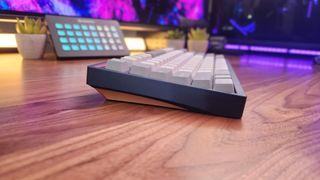
Since this is a keyboard you customize from the ground up, it’s also likely that you’ll derive more satisfaction from gaming with it than a run-of-the-mill gaming keyboard. Beyond basic responsiveness and programming, it comes down to how nice the keyboard is to use, and the Sonnet is excellent, and caters to your particular tastes in a way traditional mechanical keyboards cannot be.
Over my testing period, I played everything from Battlefield 2042 to Baldur’s Gate 3 and even dabbled in Alan Wake 3. I don’t use complicated macros for gaming, but I do like to keep multiple profiles so I have keymaps right on hand. The Sonnet worked perfectly for that. The layout is also a boon to gaming, leaving more space for the mouse hand in first-person shooters.
Software for the Mode Sonnet
The Sonnet doesn’t have software of its own and instead uses VIA for all of its programming options. VIA is an open-source configurator that now has a handy online tool that can instantly detect the keyboard without the need to load a JSON file like most other custom keyboards. Once it does, remapping keys is as simple and straightforward as keyboard software comes.
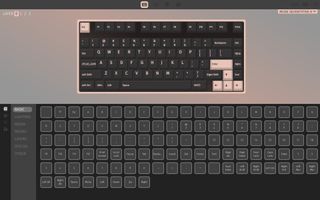
VIA works by giving you a visual layout of your keyboard with all of the existing keymaps. Below this diagram are all of the potential options you can place there instead, broken into tabs for different functions. You simply click the key you’d like to change and click what you’d like there instead. Changes are saved automatically and will work on any PC, regardless of OS or IT security policy.
The Sonnet supports up to four layers of keymaps. Think of these like whole extra key sets that can be accessed by tapping or holding a function button — not unlike Razer HyperShift, except you’re not limited to a single layer. This allows you to map media controls, buttons for specific apps or games, lighting controls, and macros without losing the functionality of any key on your top, physical layer.
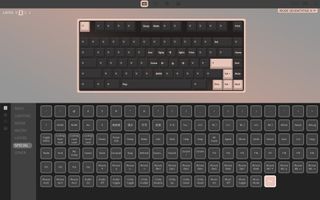
What’s wonderful about VIA is that it allows you to get creative with how you access these layers. You can tap and hold a function key, tap it once to activate that layer, activate it only for a single keystroke, and more. My favorite function is Layer Tap (which doesn’t have its own button but can still be applied using the “any” option), where your function key only activates when held, but when it’s tapped, will still work as the standard key. Caps Lock becomes the perfect function key in this case, giving you instant access to another layer of keys with your pinky while still working like normal when tapped and re-tapped.
Using this, have separate layouts for different games or applications that can be swapped on the fly. You can have up to four commands tied to a single key. Or, returning to my Layer Tap example, have all of your arrows, navigation buttons, media and lighting controls, and more positioned directly around Home Row, making the entire keyboard feel more efficient.
The biggest downside to VIA is that macro functionality is more limited than you’ll find on the best gaming keyboards. Because the software is designed to work identically with hundreds of different keyboards, advanced functions like record-buttons macros are out. You can input text strings but even key combinations (Alt+F4, for example) require typing in keycodes. It’s technically possible, but if you’re anything like me, you’ll find tools like Bartel’s Macro Recorder Pro to be much easier and more efficient.
Bottom Line
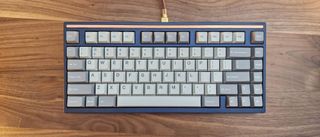
The Mode Sonnet is truly something special in the custom mechanical keyboard world. It’s much more readily available than the majority of its competitors and the final product is just as high-quality and well-designed as the very best options in this hobby. The online configurator makes designing your perfect keyboard easy and its case will keep your keys sounding good no matter what you build it with.
There’s no way around its price creep, though. The Keychron Q1 doesn’t have the same refined look or feel as the Sonnet, but at $179.99, it’s still a compelling alternative. If gaming keyboards are more your speed, the Azoth ROG Azoth offers class-leading keys and excellent wireless connectivity.
But if you’re looking for a keyboard with grown-up looks and an even better sound and feel, the Mode Sonnet is simply one of the best choices available today. It’s a big step forward from the Sixty-Five and, even now, a year after launch, still has lessons to teach the mechanical keyboard industry. It gets expensive fast with add-ons, but it’s a winner even in its most basic configuration.
MORE: Best Gaming Keyboards

Chris is a regular contributor for Tom’s Hardware, covering mechanical keyboards, peripherals, and content creation gear.
-
Hrunga Zmuda Minor correction, connectivity is USB-C. I've had a Sonnet since last March and love it. I finally upgraded it with the copper bottom last month with a custom laser engraving. You would think that was enough, but I also got a Mode Envoy and now a Mode Cassette TKL. I've spent more money on my keyboards that my M1 MacBook Pro. And am quite happy with the results. If you care about the quality of the keyboard, you can't go wrong with Mode. And their customer support is the best of any company I've ever dealt with. You'll also find a very friendly fanbase on their Discord.Reply
